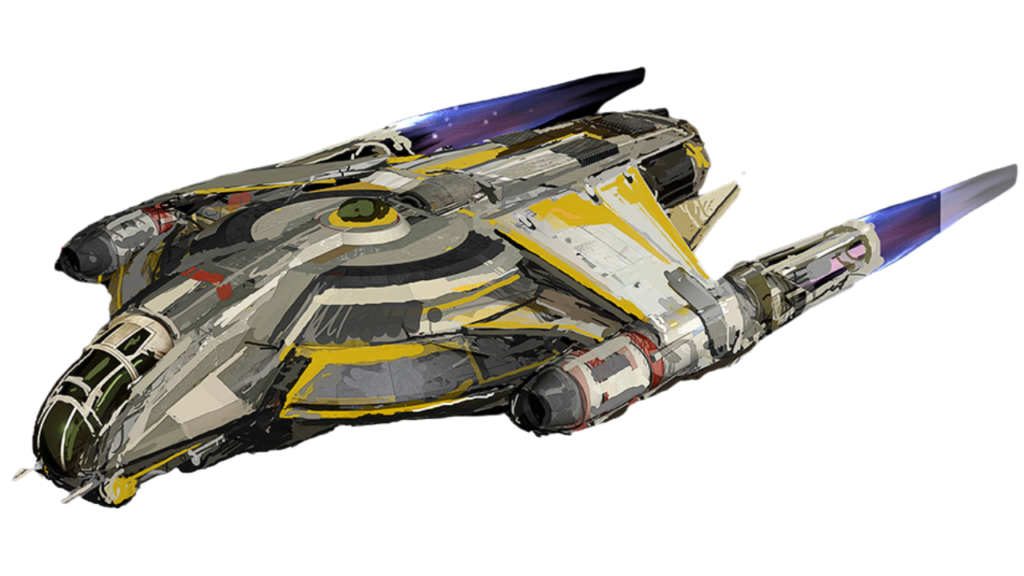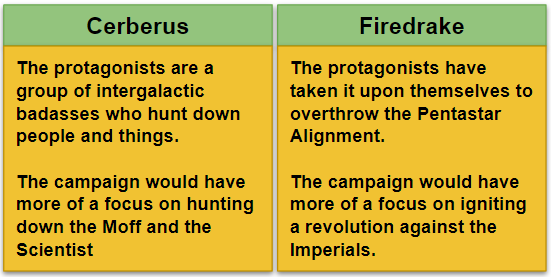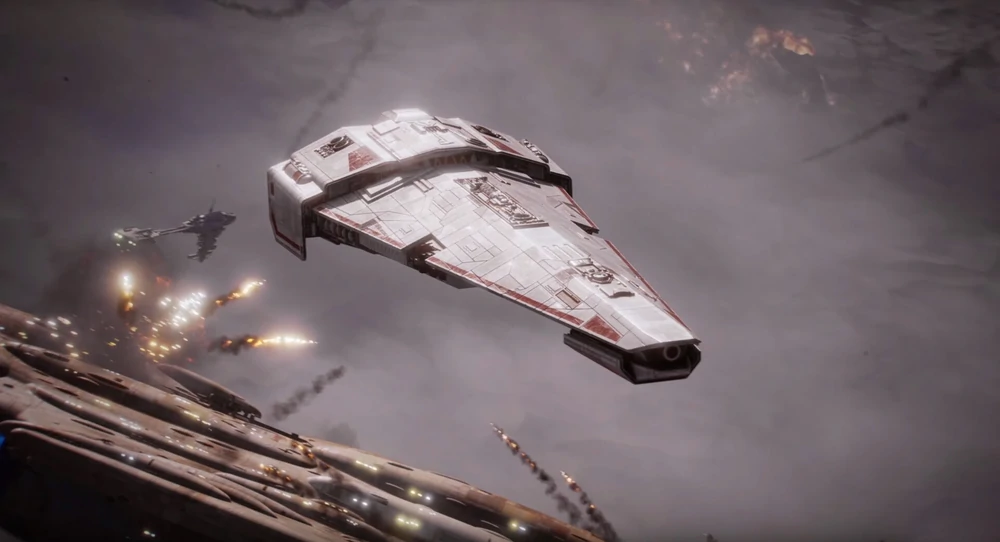The idea for this post came when watching the first live stream from Star Wars Celebration which will still be in full swing when this is published. I got thinking about how I used to run a lot of Star Wars tabletop role-playing games back in the day. I decided I’d commit to celebrating Star Wars Celebration weekend by laying out how I’d do a Star Wars campaign now!
Star Wars gaming and me
The WEG Star Wars role-playing game is the game I’ve run the most. While this is all a long time ago it’s one of the most influential role-playing games I’ve actually run. It enabled you to do fast-paced, action-orientated space operas and gave all sorts of advice based on delivering the experience of the fiction. It was the WEG Star Wars role-playing game that kept Star Wars alive for me during the dark times when nothing much was being put out.
Despite this, I was never inspired to run Star Wars games at all after my period of gaming exile between 1996 – 2000. A combination of what I wanted out of a role-playing game having radically changed, which meant WEG Star Wars didn’t have the same immediate appeal, and the fact I just didn’t seem that enamoured with delivering the Star Wars gaming experience any more. It was potentially tied up with the whole surround of Star Wars and Star Trek at the time, doing the whole Cosplay thing and going to conventions which had also stopped.
I thought I was done with it all but my connection to both Star Wars and gaming has shifted over time.
The campaign influences
I always go into a campaign with key influences, my last one had its own set.
Look, back when I was running Star Wars games there was one inspiration: the original trilogy. Keep it fast-paced, have characters develop during the action and why destroy a city when you can destroy a planet? Numerous influences have shifted how I’d approach Star Wars a bit.
The TV series Andor has seriously inspired me to tackle something Star Wars. It’s inspired me because it gives Star Wars a different framing that makes the campaign different to the ones I’ve run in the past.
I’m under no delusions the campaign is going to be a grand, written opus like Andor, it’s just a game, but I’d like to carry over the tension, groundedness and commitment to ideas that are in that show. If there is a Star Wars vibe permeating the campaign it’s Andor. A campaign where the action is just a fraction lower scale and the ideas and passion are as important as the heroics. After all, what is Andor but a show about the ideas and relationships surrounding ideas, people and institutions? I think all campaigns should be about those things.
Star Wars video game cinematics are awesome and YouTube allows you to watch them without playing the games. They are really inspiring. It’s true some of them aren’t tonally what I’m looking for as the Star Wars: The Old Republic ones are a bit ‘out their space opera’ but then you get into the cinematics for the Battlefront games and they are well into the correct tone. I even stole one of the ship designs from the Battlefront cinematics, at least in terms of the outer shape.
The Star Wars films A New Hope, The Empire Strikes Back and Rogue One. They have that harder, more serious edge harking back to an era when The Empire was actually scary and dangerous. They are also stories about rebellion and making a stand against an enemy that is seemingly all-powerful. It’s hope against a sense of inevitability where maybe some hard choices are required.
Taylor Sheridan TV shows. I’m specifically thinking of the Yellowstone shows. Is that a bit weird? I don’t think so. What these shows do is a great job of telling stories about characters who hold to a set of ideals, which in themselves may not be perfect, who are willing to fight for them and who are often dealing with being at odds with the times or having been forged by events in the immediate past (in 1883 various Indian Wars, while 1923 is impacted by WWI). This is an interesting dynamic, you just have to make the society they are fighting against the one forged by The Empire and the immediate historical event which still resonates is the rebellion and the Galactic Civil War (add in variations suitable to different Star Wars time periods).
There are other influences but they are definitely secondary. Star Wars: Rebels and Star Wars: The Bad Batch give great examples of mission and objective-based storytelling. While I’m not looking to re-create the oppressive atmosphere the modern version of Battlestar Galactica hits how a military feel can add to the drama. Then you have Blake’s Seven, especially if the Firedrake play model is chosen when the ship is selected.
Games have changed
Anyone who knows me was probably expecting me to pick Fate Accelerated, right? That would be a great option in many ways, but it’s not where I landed.
Since WEG Star Wars was one of the games I connected to the most the role-playing game landscape has completely changed. The whole gaming space in terms of the games and the culture of it is completely different. I’ve also changed how I approach gaming and what I want out of the experience.
The slow return to being interested in Star Wars gaming has become intrinsically tied up with my journey with Powered by the Apocalypse and Forged in the Dark games. If I was to dip my toe into either of those engines it came down to Monster of the Week for the former and Scum & Villainy for the latter.
After thinking about these engines and comparing the games I’m familiar with my sensibilities align with Forged in the Dark. The issue with Forged in the Dark games was always the structure, but when looking at how I’d approach Scum & Villainy I decided my approach would be to always view the game as being in free play, you just have some different tools at certain times. I’ve also come to really value the framing of these games as the value being in the quality of the conversation at the table. This aligns with my theory that actual play is like a live script read for a script that’s being made up on the spot.
All this rolled up into my influences for a Star Wars game and I started to see how Scum & Villainy could become something that intrinsically supported the type of Star Wars game I’d run now.
The Campaign Premise
The premise is simple. It’s one year after the Galactic Civil War and the New Republic forces are hunting down warlords and Imperial remnants. The characters are people forged in some way from that conflict either directly or indirectly. These rebels, criminals, survivors or all three head into a part of the unknown region with a purpose.
The exact purpose will be a mixture of hunting down a Moff and Scientist with nefarious plans or trying to overthrow The Pentastar Alignment who still rule over the area. The balance of importance to either of these will depend on the ‘ship choice’ made during the character creation process.
That’s all that exists. I’ve not mapped out sectors or noted what factions may exist. I’ve not even decided what the Moff and the Scientist are up to. It’s just a concept.
For those long in the tooth when it comes to WEG Star Wars? Yes, I have read and I once owned the Darkstryder boxed set.
The starting position
I’d keep the suggested opening for the Firedrake ship selection in the Scum & Villainy book but give it a Star Wars spin.
The Star Destroyer Subjugator is under attack from a rebel fleet as they seek out the Imperial remnants after the Battle of Endor. You’re on this Star Destroyer in a cell but the sirens are blaring and the ship is obviously suffering serious damage. The immediate objective is to escape in the chaos and you understand their is a ship you could commandeer in the hanger deck.
Make the engagement roll and queue the opening mission to escape the Star Destroyer before it potentially breaks up in space. The observant of you with a history with the WEG Star Wars game will recognise this as the set-up of the adventure supplement Starfall.
Adopting my theory that you never really leave free play we can use downtime to also play out the immediate impact with the rebel fleet and establish the characters shooting off into the distant sector.
End credits when they jump to hyperspace.
The player characters
These are characters who have been fighting or living in or through an insurgency or war for up to ten years or longer. They should feel like characters from a western who are burned by their past. What have they done? What will it take to achieve victory? They are certainly heroes, but they have some emotional and psychological heft.
The hope would be to avoid the black and white nature of Star Wars where even Han Solo becomes a pretty altruistic hero once A New Hope is over. These characters are looking to do good and achieve an altruistic aim but they recognise, due to their past or their purpose, this might involve hard choices. They are heroes but they are, to some small degree, damaged without being basket cases.
This is because their actions should mean something.
I’d also work with the players to enact some restrictions. I’d not want to focus on a menagerie of aliens as I believe Star Wars stories feature ‘human’ antagonists with maybe a token alien (look at all the influences? All human protagonists). I’m not sure Jedi fit in either but I’d be open to one if the pitch was particularly interesting.
The Ship Selection

I favour campaigns with purpose, so the ship selection is going to be either the Cerberus or the Firedrake (from the book the names will change). Not sure the smuggling ship meets the requirement.

The campaign has two undercurrents to it: the Moff and Scientist and whether they overthrow the Pentastar Alignment. The ship selection just prioritises each of those in actual play.
Tweaking the engine
I am going to tweak the games a bit. These tweaks don’t change the essential rules and game loops so I believe I’m on safe ground. The changes just provide some focus or change how things are viewed in the context of the fictional fabric.
Adding story focus
The whole heritage, background, belief and drive setup of Scum & Villainy (and Forged in the Dark generally) just seems a bit lazy. I’m okay with how the experience loop works I just think these elements need to be given more meaning and focus to truly drive an individual protagonist’s story. Hell, your beliefs and drives aren’t discussed in anyway way beyond you having them and aren’t even in the index.
Since we’ve dived into this abruptly over Star Wars Celebration weekend my initial approach would be each character has five tags two of which have to be a heritage and background and then the other three are a mixture of beliefs and drives.
Then I’d change the experience loop to be you expressed one or more of your tags this session.
The tags just give the opportunity to turn the general into the specific. Your heritage is Imperial but what does that really mean to the protagonist? You’re a rich Noble but how does that really define the character? The Noble background would be an entirely different tag for Princess Leia as opposed to Greef Karga (once he becomes rich beyond avarice).
You get the idea.
Show me the money!
In Scum & Villainy, the crew get money for doing jobs. This is often assumed to be explicit. An individual or a faction employs you to do something and you get paid. I’m going to leave the whole earning credits part of the game untouched in terms of mechanics but just abstract it a bit more in the reality of the fiction.
This is because not everything may be a job from someone with credits attached to it. If the players have opted for the Firedrake and have an implicit goal of overthrowing The Pentastar Alignment then a lot of that may not be paid jobs. In the fiction, we just say it represents the network of paid support the protagonists have in their ongoing fight. This makes the money even cooler as then that shadowy network of financial support can be woven into the story and the fiction if it’s interesting to do so.
Using the structure
The structure of Forged in the Dark used to irritate me but over time I’ve become more accommodating to it. I’ve come to the conclusion it could enhance the experience. I’m going to focus on the game always having the flexibility of free play and investing in the quality of the conversation but I think the structure can be used as an effective transition mechanism.
In theory, yet to see in practice, I think it would be cool to have a conference set up before we zoom in and after we zoom out of the job. This can provide some last-minute focus beforehand and also afterwards can be an opportunity to review events and any narrative fallout even handling Payoff and Upkeep, Heat and Entanglement as part of this conference before the protagonists nod their heads, split up and go back into individual free play through the lens of Downtime.
The more I think about it the more of an opportunity it is. It represents what I want to do with the structure of Forge in the Dark, use it to create scenes that enhance the conversation and don’t just become mechanical steps to work through.
And, Finally…
Well, there you have it. How I would approach a Star Wars role-playing game campaign if I was to do it now.
When I was running WEG Star Wars I didn’t expect the game to support the story just not get in the way or support the fabric of the genre. Now I view it differently and I want the system to help and support the outcome of the experience being an interesting story constructed in the moment by all concerned. It also shows how my view of game engines changes over time.

